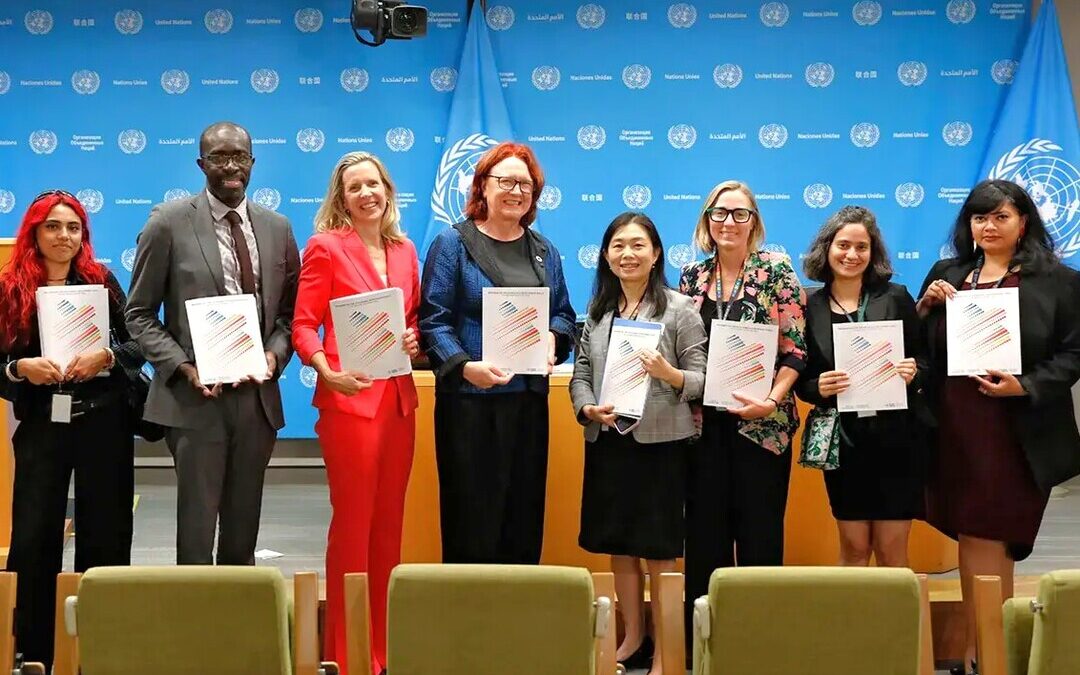Closing Gender Digital Divide Could Add $1.5 Trillion to Global Economy: UN
UN report warns gender equality progress is stalling, urging urgent action to fight poverty, digital gaps and climate risks.
Closing the gender digital divide could lift 30 million women from poverty and add $1.5 trillion to the global economy by 2030, the UN’s “Gender Snapshot 2025” report said.
The study, released by UN Women and the UN Department of Economic and Social Affairs on Monday, warns that progress on gender equality is slowing across key development goals.
“Gender equality is not an ideology. It is foundational for peace, development and human rights,” said Papa Seck, Chief of the Research and Data Section behind the study.
Persistent Poverty Gap
As of 2025, 376 million women and girls live in extreme poverty, representing 9.2 percent of their population compared with 8.6 percent of men and boys. At this pace, 351 million could still live on less than $2.15 a day by 2030. Sub-Saharan Africa faces the heaviest toll, with 233 million women affected.
The report warns that missed opportunities in labor markets, healthcare, and social protection reinforce inequality. Accelerated investments in these areas could reduce the female poverty rate to 2.7 percent by 2050, cutting the number of women in extreme poverty to 128 million.
Digital Divide and Economic Payoff
Globally, 70 percent of men use the internet compared with 65 percent of women. In the least developed countries, fewer than one in three women have access to the internet. Closing this divide could benefit 343.5 million women and girls by 2050, with nearly half in Africa.
The economic benefits are large. Closing the divide could generate $1.5 trillion in global GDP by 2030 and $100 trillion cumulatively by 2050. It could also make 42 million more women food secure by mid-century. Rwanda and Costa Rica are highlighted as countries where digital policies improved women’s access and training.
Rising Food Insecurity and Health Risks
Food insecurity hits women harder than men. In 2024, 822 million women faced moderate or severe food insecurity compared with 759 million men. That leaves 64 million more women food-insecure.
The report projects anemia among women aged 15–49 will rise from 31.1 percent in 2025 to 33 percent by 2030. In Southern Asia, anemia causes an annual economic loss of $32.5 billion.
Health systems show progress but also setbacks. Maternal mortality has declined 39 percent since 2000, yet women still spend more years in poor health than men. Cuts to global aid and backlash against gender programs now threaten these gains.
Violence and Early Marriage
Violence against women remains widespread. One in eight women aged 15–49 experienced physical or sexual violence by an intimate partner in the past year. Nearly one in five young women aged 20–24 was married before turning 18, down from 22 percent in 2014. An estimated 4 million girls undergo female genital mutilation annually, with more than 2 million before age five.
The report stresses that progress depends on enforcing laws, funding survivor support and linking economic empowerment to prevention. Countries with strong protections see violence rates two-and-a-half times lower than those without.
Work, Wages and Unpaid Care
Women remain excluded from equal work opportunities. Despite making up 40 percent of the global labor force, they account for only 29 percent of projected labor force increases from 2024 to 2026.
Generative artificial intelligence poses new risks. About 27.6 percent of women’s jobs are exposed to automation, compared with 21.1 percent of men’s jobs. Clerical roles, where women are concentrated, are especially vulnerable.
Care burdens also block progress. Women perform 2.5 times more unpaid domestic and care work than men, keeping 708 million out of the labor force. In Northern Africa and Western Asia, women spend more than four times as many hours as men on care work.
Leadership and Representation
Women’s representation in power remains limited. They hold 27.2 percent of seats in national parliaments and 30 percent of managerial positions. At the current pace, parity in management would take nearly a century.
Representation in local governments stagnated at 35.5 percent in 2024. Globally, 102 countries have never had a woman serve as head of state or government.
In education leadership, women are often teachers but not principals. In 65 of 70 countries surveyed, women dominate secondary school teaching roles, yet lag far behind in school leadership.
Climate Change and Security Risks
Climate change compounds gender inequality. Under worst-case scenarios, up to 158 million more women and girls could fall into extreme poverty by 2050, with nearly half in sub-Saharan Africa.
Conflict also disproportionately affects women. In 2024, 676 million women and girls lived within 50 kilometers of a deadly conflict, the highest since the 1990s. Although women’s participation in peace processes improves outcomes, their presence as negotiators, mediators, or signatories remains far below the UN target of one-third.
Call for Urgent Action
The report arrives ahead of the 30th anniversary of the Beijing Platform for Action, the world’s most comprehensive blueprint for gender equality. It urges governments to adopt integrated policies across poverty reduction, digital inclusion, healthcare, education, and climate resilience.
“We are at a crossroads,” said Seck. “Systemic neglect and stalled investments will lock in inequality, but decisive action can reverse course.”
Also Read:
India’s Female Workforce Participation Nearly Doubles in 6 Years: PLFS Survey
Nirmal Menon
Related posts

Subscribe
Error: Contact form not found.


